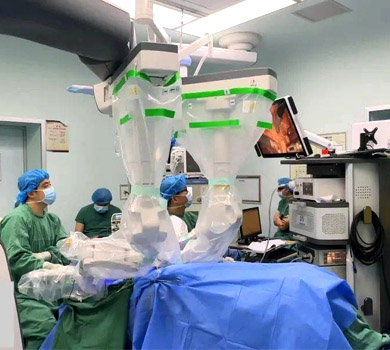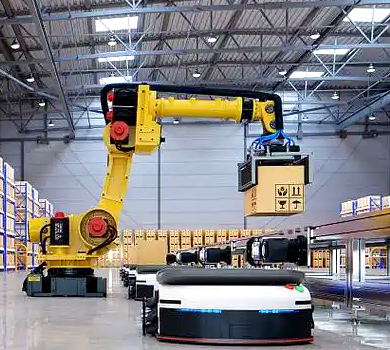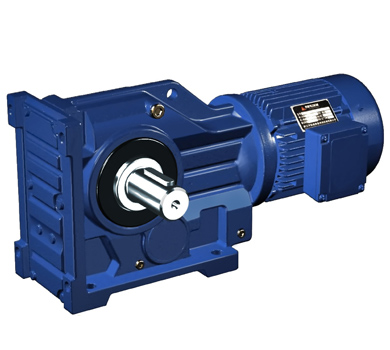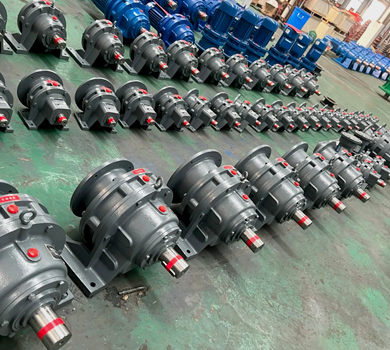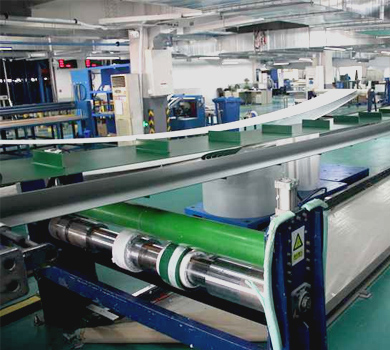With the rapid development of the semiconductor industry, wafer loading rotary transfer mechanisms have become one of the most critical components in wafer processing equipment. These mechanisms are responsible for the precise and smooth transfer of silicon wafers between various processing stations, and their performance directly affects product yield and production efficiency. In this case study, we will explore the challenges of the industry, the critical role of gearboxes, and how Waimica’s worm gearboxes have been successfully deployed to meet the demanding requirements of semiconductor manufacturing.
Industry Challenges and Pain Points
Wafer loading rotary transfer mechanisms are typically composed of high-precision motors, servos, and gearboxes. As a core part of the system, the gearbox is responsible for transmitting torque and achieving precise motion control in high-repetition, high-speed, and high-accuracy environments. Key trends in the industry include:
- Miniaturization: Smaller devices and tighter integration of equipment components require compact and lightweight drive systems.
- High-Speed Precision: The increasing speed of wafer processing demands faster and more accurate rotary motion.
- Extended Lifespan and Reliability: Continuous 24/7 operation in cleanrooms and high-temperature environments increases wear and stress on components.
Despite these advancements, the industry still faces several challenges in the drive system:
- Low Torque Density: Standard gearboxes struggle to deliver sufficient torque in compact designs.
- High Maintenance Frequency: Frequent breakdowns and lubrication requirements disrupt production and increase downtime.
- Compatibility Issues: Integrating gearboxes with existing automation systems is often complicated by non-standard mounting interfaces and control protocols.
- Cost Constraints: High upfront and lifecycle costs of foreign gearboxes limit scalability and adoption in mid-range applications.
Key Role and Technical Requirements of Gearboxes
In wafer loading rotary transfer mechanisms, gearboxes must meet a unique set of technical and operational requirements to ensure system performance. These include:
- Torque Density: Must deliver high torque in a small footprint.
- Transmission Accuracy: Backlash must be minimized to ensure precise wafer placement.
- Response Speed: Enables fast and stable motion transitions without compromising accuracy.
- Self-Locking Capability: Ensures safety and stability during high-torque holding conditions.
- Compact Design: Must support space-constrained integration in modern semiconductor tools.
- Environmental Adaptability: Must operate reliably in cleanroom conditions, elevated temperatures, and high humidity environments.
- Long Service Life and Low Maintenance: Reduces service interruption and operational costs.
Waimica’s Worm Gearbox Solution
Waimica has developed a series of worm gearboxes specifically for wafer loading rotary transfer mechanisms in semiconductor manufacturing, addressing the industry's key pain points through innovative design and high-performance engineering.
1. Structural Design Highlights
-
The Waimica worm gearbox features:
- Modular Construction: Allows for quick assembly and disassembly, reducing maintenance time.
- Space-Efficient Layout: With a low-profile and high-axis design, it fits easily into tight spaces.
- Customizable Mounting Options: Offers multiple mounting configurations to suit diverse automation system requirements.
2. Performance Parameters
- Input Flange: ISO 9445 standard interface, compatible with major motor brands.
- Output Flange: NEMA and IEC standard output flanges for direct integration with wafer-handling arms and positioning systems.
- Backlash: Less than 5 arc-minutes, ensuring high positioning accuracy.
- Torque Range: Up to 2000 Nm, suitable for heavy-duty wafer loading tasks.
- Efficiency: 70–85%, depending on the gear ratio, with optimized heat dissipation for long-term operation.
- Operating Temperature: -20°C to +120°C, supporting extreme conditions in production environments.
- IP Rating: IP55 for standard environments, with special models reaching IP67 for high-temperature or cleanroom applications. The gearbox is also designed for low-noise operation, meeting stringent acoustic standards for cleanroom and precision equipment.
3. Special Environmental Conditions Support
Waimica’s worm gearboxes are engineered to operate in harsh industrial environments such as cleanrooms (ISO Class 7 and higher) and high-temperature zones (up to 120°C). Special sealing and lubrication systems are used to ensure no contamination and extended service life in these conditions.
| Parameter | Waimica | Other Brands |
|---|---|---|
| Backlash (arc-min) | ≤5 | ≤7 |
| Torque (Nm) | Up to 2000 | Up to 1800 |
| Efficiency (%) | 70–85 | 75–88 |
| Operating Temperature (°C) | -20 to +120 | -10 to +100 |
| IP Rating | IP55 / IP67 (custom) | IP54 / IP66 |
Typical Application and Customer Feedback
A leading semiconductor equipment manufacturer in China required a reliable and cost-effective drive solution for a new wafer loading station. The mechanism needed to rotate and align wafers with sub-micron precision, while maintaining long-term stability under 24/7 operation and at operating temperatures up to 100°C.
The Waimica technical team conducted a detailed on-site analysis, including motor power requirements, motion profiles, and system thermal behavior. Based on these findings, the Waimica worm gearbox was selected for its high torque density, low backlash, and IP67-rated housing, which ensured compatibility with the cleanroom environment and long service life.
| Performance Metrics | Before Waimica | After Waimica | Improvement |
|---|---|---|---|
| Backlash (arc-min) | 8.2 | 4.5 | ↓ 45% |
| MTBF (Mean Time Between Failures) | 3,500 hours | 6,800 hours | ↑ 97% |
| Maintenance Interval | 3 months | 12 months | l↑ 300% |
| Cost of Ownership (per unit, 3 years) | $3,200 | $1,800 | ↓ 43.75% |
The customer reported a significant increase in system stability, with the new transfer mechanism achieving a 99.95% uptime rate in the first year of operation. Maintenance costs were reduced by over 40%, and the overall cost per wafer processed was lowered by 20% due to the improved energy efficiency and reduced downtime.
Conclusion and Waimica Brand Value
Waimica’s worm gearboxes have demonstrated exceptional performance in the semiconductor industry, particularly in wafer loading rotary transfer mechanisms. Our products combine high torque density, precision, and environmental robustness with modular design and cost-effectiveness. The Waimica solution not only meets but often surpasses the specifications of international counterparts, offering a compelling alternative for cost-sensitive applications.
As a trusted partner in industrial automation, Waimica provides customized, reliable, and long-lasting drive solutions. Our engineering team works closely with customers to tailor gearbox parameters to their unique operational requirements, ensuring seamless integration and maximum ROI.
Looking ahead, the semiconductor industry is expected to continue its path toward higher automation, miniaturization, and energy efficiency. Waimica is well-positioned to support these trends with its advanced product portfolio and strong R&D capabilities. We are committed to providing high-quality, high-performance, and cost-effective solutions that enable global manufacturers to stay competitive in a rapidly evolving landscape.


